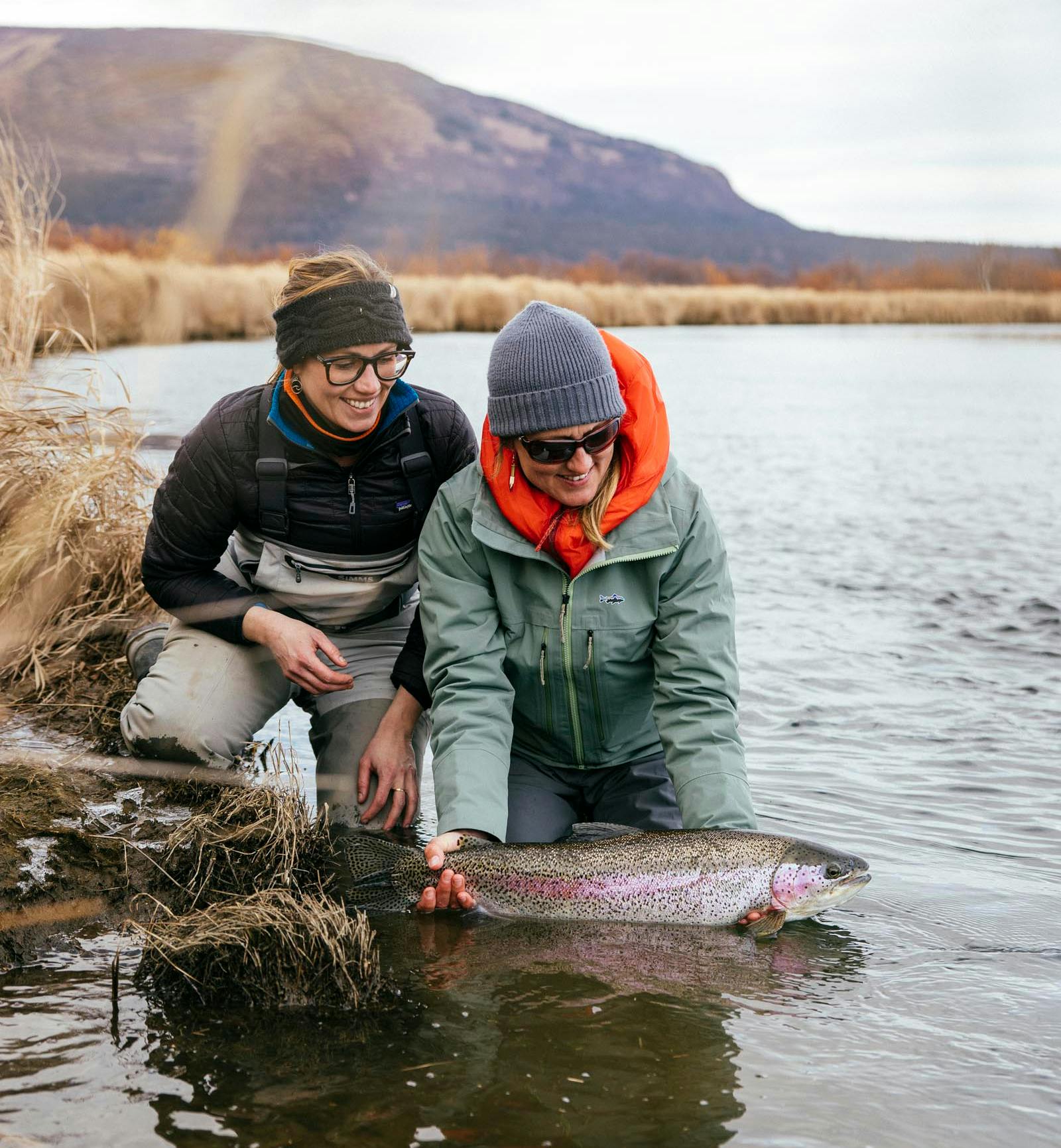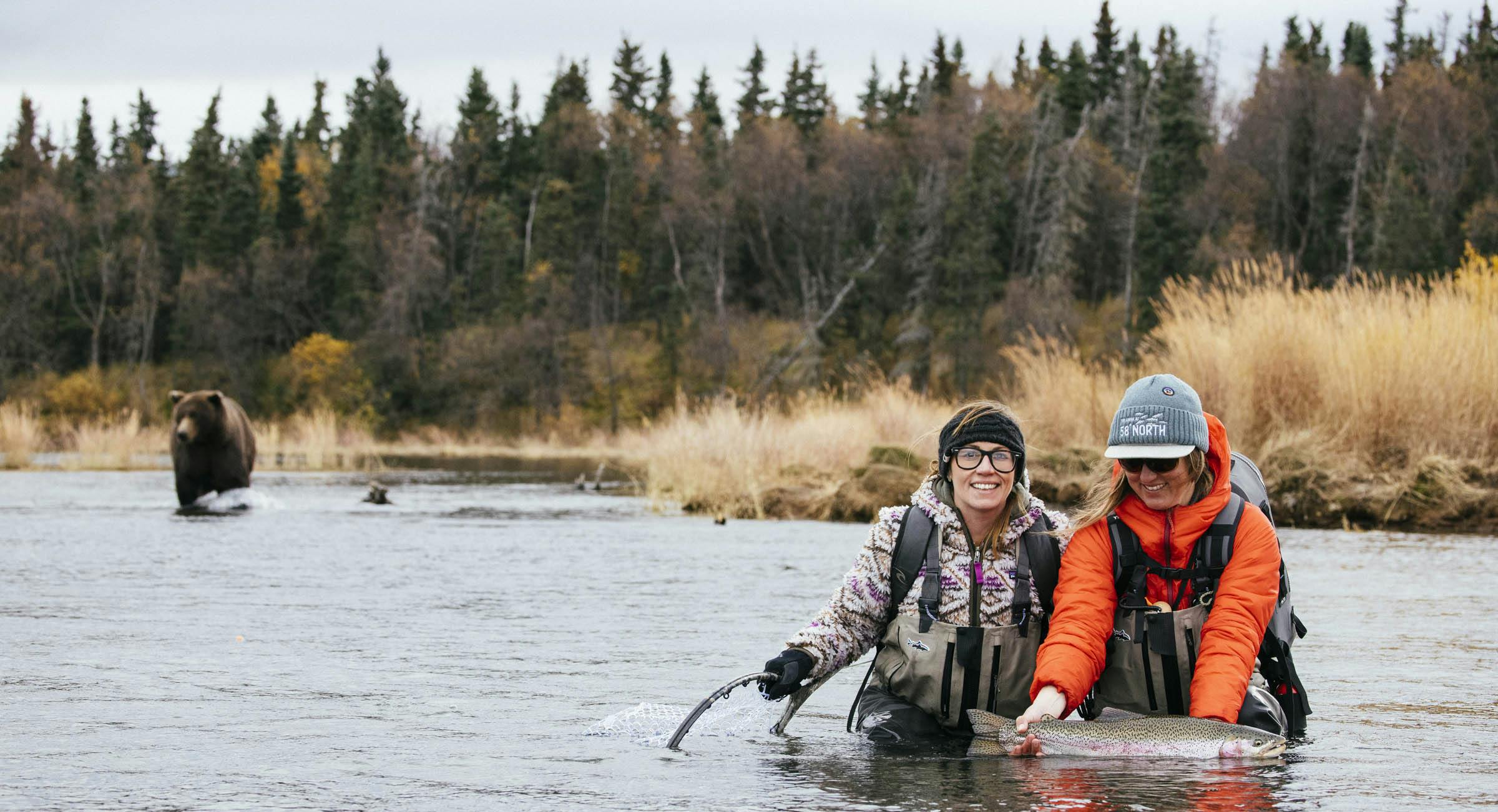Fall Fishing in Bristol Bay
By Nick Basaraba (Aug 24)
Toss around words like “the biggest trout in the world” and your mind may wander to the far-flung corners of the world like Kamchatka, New Zealand, Mongolia, or Patagonia. But what if we told you that you can find fishing that rivals, or even exceeds, any of those places all without having to pack your passport?
In fact, some of the biggest trout in the world live less than ten minutes away from our dock in front of the Lodge at 58* North. Just a short flight in our float plane or an even shorter jetboat ride away, you’ll find yourself casting flies into some of the world’s most productive big trout rivers.

There are season-wide opportunities to catch a fish in Bristol Bay that any of us would consider a rainbow trout of a lifetime, one that measures 30 inches or longer. However, the time of year that our guests consistently encounter Alaska’s trophy trout remains the same, season after season. And that is fall time.
Our home river, the Naknek River, flows serenely by our riverfront dock and nourishes an impressive population of southwest Alaska’s largest rainbow trout during the months of September and October. Our guide season at the Lodge at 58* North stretches well into the middle of October for one simple reason: we experience some of the best fishing of the season in those final, magical days of fall just before ice starts to form on the riverbanks. Starting in September and continuing well into October, rainbow trout migrate downstream out of Naknek Lake and congregate heavily in the expansive, picturesque runs that occur in the river between the lake mouth and the location of our lodge. And we don’t state this lightly, these massive rainbows can be unbelievably aggressive.
But they don’t always behave this way. In the summer months, these behemoth trout can be harder to convince to eat artificial flies for two reasons: their tendency to wander and spawning salmon.

Countless creeks and streams act as arteries and capillaries that feed the heart of our home waters, Naknek Lake. As salmon migrate from the ocean and into Naknek Lake, they split into distinct spawning populations that reach their spawning streams over the span of various days and weeks throughout the summer. By the end of July, we see the first sockeye salmon that have reached their spawning streams begin to drop eggs. The trout are very aware of this bountiful salmon exodus. Trout follow the salmon up to their spawning grounds and take up position behind the writhing masses of spawning sockeye’s, lining up to feast on the constant flow of eggs that tumble downstream in the current. We target these trout using flies that imitate egg patterns with great success, but it takes persistence. Unlike the fall season, trout feeding on eggs do not have to move out of their feeding lanes in order to chase down their food, so they rarely do.
Having completed their life journey and spawned the next generation, these salmon begin to die. The trout will then retreat out of one creek and journey up another to find a new stream swarming with fresh spawning salmon. For the remaining weeks of the summer, our pilot, Chris, will fly us up and down numerous Bristol Bay river systems in our float plane as we follow these migrating salmon and the trout that feed among them. When you consider that over 53 million sockeye salmon returned to Bristol Bay rivers in 2023, there is no shortage of nutrient-rich food that keep the region’s trout well fed. The result is one of the most productive, diverse, and interconnected freshwater ecosystems found on the planet, one that sustains and generates some of the biggest rainbow trout found in Alaska.
Have we mentioned the bears? The coastal brown bears are a reason all their own to come fish Bristol Bay during fall. By September they are heavily concentrated on many of the streams we visit daily and weekly. Fishing alongside and respectfully sharing prime runs and riffles with a dozen Volkswagen-sized brown bears that are running through vast schools of bright red spawning sockeye is an experience that is hard to describe to those who have not witnessed it themselves. Having spent their entire lives interacting closely with humans, these bears are very comfortable around us. In fact, they tend to completely ignore us and happily go along with their lives, fattening up on the bounty of salmon in preparation for winter hibernation. We respect their distance but that doesn’t mean they always respect ours, so close encounters are almost guaranteed. Sometimes it’s more fun to put the fly rod down to sit back and watch them snorkel through the crystal-clear water or sprawl out for a nap in the sunshine. Each of our guides have years of experience safely fishing around these amazing animals and love to show our guests that the bears are an integral part of what makes fall trout fishing in Bristol Bay so special.

In September we continue to rely heavily on our float plane to explore many of the still productive streams throughout the neighboring lake and river systems, especially as we begin to explore creeks that are known exclusively for large Arctic char and Dolly Varden. To truly grasp the remoteness of where we are located and take in the stunning scenery of Katmai National Park, one must get in the air and see it from above. The tundra radiates with autumn colors as yellows, oranges, and reds blanket the vast and unaltered wilderness landscape surrounding the Lodge at 58* North.
September is also when we see the first big push of migratory rainbow trout drop out of the headwater streams where they gather in the deeply structured, turquoise runs of the Naknek River below the lake. Here, we welcome them with open arms and swung flies, capitalizing on their behavioral shift from lazy egg gluttons to aggressive predators.
By the time October arrives, crowds on the Naknek begin to thin with fewer lodges operating which maximizes our opportunities to guide our late season guests into fish that would leave even the most experienced anglers shaking from a heavy dose of adrenaline. Trout are constantly stalking throughout the Naknek’s runs as they pursue their next meal, and each spot offers new opportunities to encounter fish fresh out of the lake that are rested and unpressured. We target high probability spots in the river where these trout are known to ambush their final meals before winter.
These fish define our ideas of what a perfect rainbow trout looks like. Whether it’s 20 inches or 30, the appearance of these trout is guaranteed to make your jaw drop. You will usually get your first good look at a hooked Naknek fish as it lobs itself out of the water multiple times in its attempt to clear your reel of fly line and backing. Since they originate from the clear water depths of one of Alaska’s largest freshwater lakes, they have a bright, chrome appearance with clear fins, a slate-gray and green back, and a subtle blush of iridescent pink that runs their entire length from cheek to tail. As you reach into the net to try and grip it, you’ll notice the wrist of the fish’s tail is so thick that it is hard to fully grasp with one hand. Having spent the previous two months inhaling abundant salmon eggs, these fish are in their best shape of the year with deep bodies, heavy shoulders, and firm, muscled flanks. Holding one you would think you had caught a fish fresh out of the ocean, but you haven’t! Welcome to Alaska trout fishing!
To experience firsthand why fall is our favorite time to fish the rivers of Bristol Bay and Katmai National Park, call our reservations line at (440)-463-1685 or email danny@frigatetravel.com.

Bristol Bay, Alaska
541 743 1255


